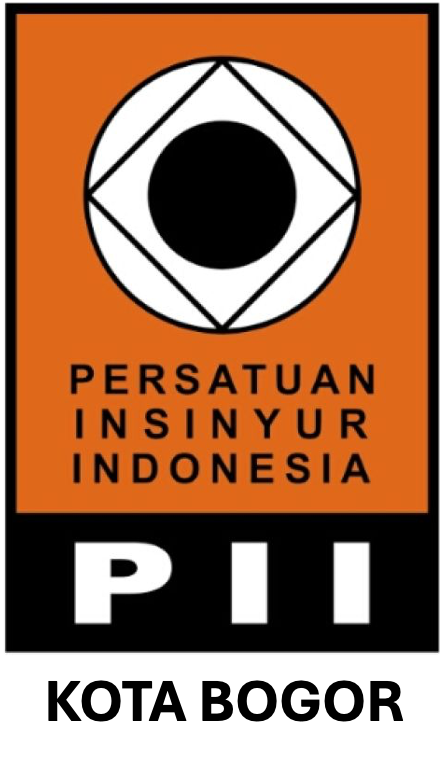Analisis Tingkat Risiko Paparan NOx Terhadap Pekerja Di Gardu Tol Akibat Volume Kendaraan di Pintu Tol Jagorawi, Bogor
Abstract
Bogor as tourist destination at weekend bear quite high vehicles volume. The purpose of this research was to analyze corelation between vehicles volume at highways gate and NOx exposure from the vehicles. By knowing the average concentration of NOx exposure level pollution risk to the health of highway gate worker could be analyzed. This research using Griess Saltzman method referring to SNI 19-7119.2-2005 using some equipment like impinger. The result showed that type of vehicle that produced the highest amount of NOx pollutant was vehicles with diesel engine, and the gate with highest NOx concentration was gate 08 with NOx concentration value 40.008 µg/m3 at 09.00-10.00. Risk quotient (RQ) to the workers with weighed 65-90 kg and had been working for 25 years was 0.041950 and it was RQ < 1. It meaned that the average pollution caused by NO2 at the highways gate does not affect workers and workers does not cause any health risk because RQ < 1. For the next research, it would be recommended to conduct on O3 and NO3, because those compounds are easily reacted with NOx in the air.Downloads
References
Aprianti D. 2011. Analisis Pengaruh Tingkat Volume Lalu Lintas Kendaraan Di Pintu Tol Terhadap Tingkat Konsentrasi TSP dan Pengukuran Konsentrasi Timbal Di Udara Ambien [skripsi]. Jakarta (ID): Universitas Indonesia.
[BSN] Badan Standardisasi Nasional. 2005. Udara Ambien – Bagian 2 : Cara Uji Kadar Nitrogen dioksida (NO2) dengan metode Griess Saltzman Menggunakan Spektrofotometer, SNI 19-7119.2-2005. Jakarta (ID): Badan Standardisasi Nasional.
Baskar P, Senthilkumar A. 2016. Effects of Oxygen Enchired Combustion on Pollution and Peformance Characteristic of a Diesel Engine. Engineering Science and Technology, an International Journal 7(19): 438-443.
[Dirjen PP dan PL] Direktorat Jenderal Pengendalian Penyakit dan Penyehatan Lingkungan. 2012. Analisis Risiko Kesehatan Lingkungan (ARKL). Jakarta (ID): Bakti Husada.
Hickman A, Hassel D, Joumard R, Samaras Z. 1999. Methodology for Calculating Transport Emissions and Energy Consumption. Luxembourg (LU): Transport Research Laboratory.
Hill R, Rinker R, Dale W. 1979. Atmospheric Nitrogen Fixation by Lightning. American Meteorological Society 9(37): 179-191.
Imansyah H. 2008. Sistem Transportasi Perkotaan yang Buruk merupakan Penyumbang Terbesar Polusi Udara. Bandung (ID): Wahli.
[IPCS] International Programme on Chemical Safety . 2004. Risk Assessment Terminology. Geneva (CH): WHO.
Maheshwari R, Bina R, Upma S, Chuhan A, Diwakar S. 2011. Photochemical Smog Pollution and Its Mitigation Measures. Journal of Advanced Scientific Research. 2(4): 28-23.
Manahan S. 2005. Environmental Chemistry 8th Edition. New York (US): CRC Press
Merker G, Schwarz C, Teichmann R. 2009. Combustion Engine Development, Mixture Formation, Combustion, Emissions an Simulation. New York (US): Springer.
Pasha A. 2011. Simulasi Dispersi Gas Karbon Monoksida (CO) Dalam Gardu Tol Menggunakan Computational Fluid Dynamics (CFD) Studi Kasus: Gerbang Tol Bogor [skripsi]. Bogor (ID): Institut Pertanian Bogor.
Radytia J. 2011. Pengaruh Volume Kendaraan Terhadap Konsentrasi Pencemar NOx pada udara ambien di Pintu Tol Cililitan [skripsi]. Jakarta (ID): Universitas Indonesia.
Wardhana A. 2004. Dampak Pencemaran Lingkungan. Yogyakarta (ID): Penerbit ANDI.
Wu E, Kuo S. 2013. A Study on the Use of a Statistical Analysis Model to Monitor Air Pollution Status in an Air Quality Total Quantity Control District. Atmosphere 13(4): 349-364.
Authors who publish with Jurnal Teknik Sipil dan Lingkungan, JSIL agree to the following terms:
a. Authors retain copyright and grant the journal right of first publication with the work simultaneously licensed under a Creative Commons Attribution License that allows others to share the work with an acknowledgment of the work's authorship and initial publication in this journal.
b. Authors are able to enter into separate, additional contractual arrangements for the non-exclusive distribution of the journal's published version of the work (e.g., post it to an institutional repository or publish it in a book), with an acknowledgment of its initial publication in this journal.
c. Authors are permitted and encouraged to post their work online (e.g., in institutional repositories or on their website) prior to and during the submission process, as it can lead to productive exchanges, as well as earlier and greater citation of published work (See The Effect of Open Access).











